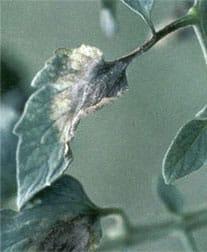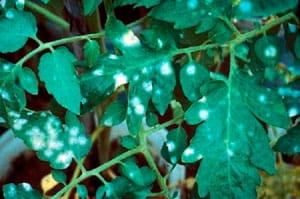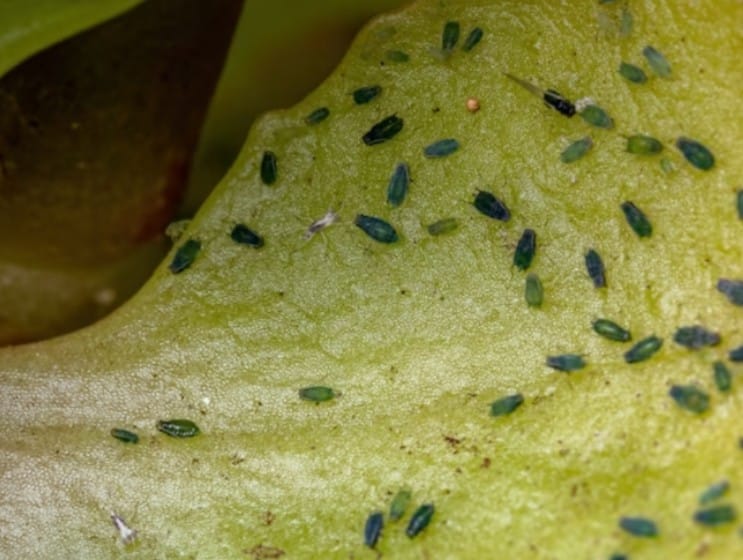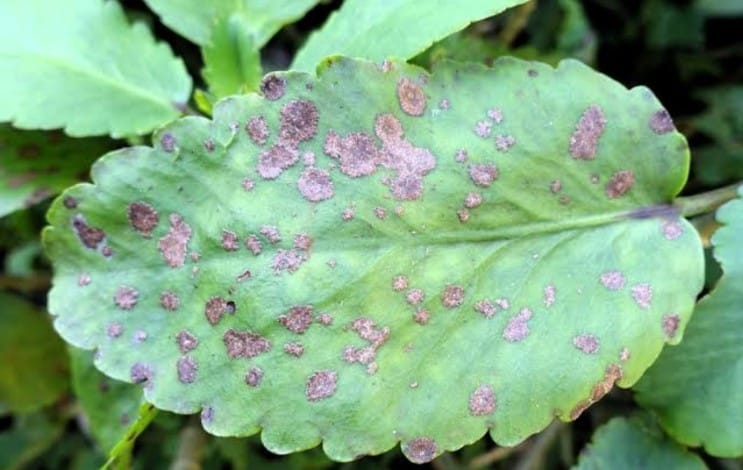Kalanchoe Plant
Kalanchoe [Commonly called as Flaming Katty] is a succulent plant with colorful flowers. Plant in well-draining soil and provide bright, indirect light. Allow the soil to dry between waterings. Deadhead spent flowers for continuous blooming. Pruning can be done to shape the plant and remove leggy growth.

Habit
Succulent
Height
0.3 to 0.5 m
Growth
Fast
Soil
Well-drained, Loamy
Shade
Full Sun to partial shade
Moisture
Moist
Edible
Yes
Medicinal
Yes
Origin
Madagascar
Climatic Condition
Tropical, Subtropical
Temperature (°)
20°C to 30°C
Humidity (%)
50% to 70%
Potting media
40% Loam, 30% Sand, 30% Compost
Fertilizers
Organic Fertilizer
Watering
Regular watering
Plant Weight
0.5 to 1.0 kg
Flowering Time
Winter to Spring
Soil Ph level
6.0 to 7.0
Water Ph level
6.0 to 6.5
Soil EC
0.4 to 0.8 mS/cm
Yield Per Plant
2 to 4 kg per plant
NPK ratio
20:20:20 or 5:10:10
life Span
3 to 5 years
Health Benefits
Anti-inflammatory, Ornamental
Suggested Grow Media or Potting Mix ?
50% cactus mix, 30% perlite, 20% sand
Suggested Fertigation/Fertilizers
Fertilize every 4-6 weeks with a balanced, low-nitrogen fertilizer.
Common Diseases and Remedies
Phytophthora , Powdery Mildew.
Dead brown spots in the area of branching . White powdery coating that covers the leaves and twigs of the plant.
Provide good drainage , Remove infested plant parts.
HEALTH BENEFITS
· Used for wound healing
· Anti-inflammatory and antimicrobial properties
What Is Kalanchoe?
Kalanchoe is a low-maintenance plant, whether grown indoors or outdoors. Plant them in clay pots in well-drained soil and place them in a location with more indirect light. For spring bloom, make sure your Kalanchoe is in the dark for the six weeks of winter.
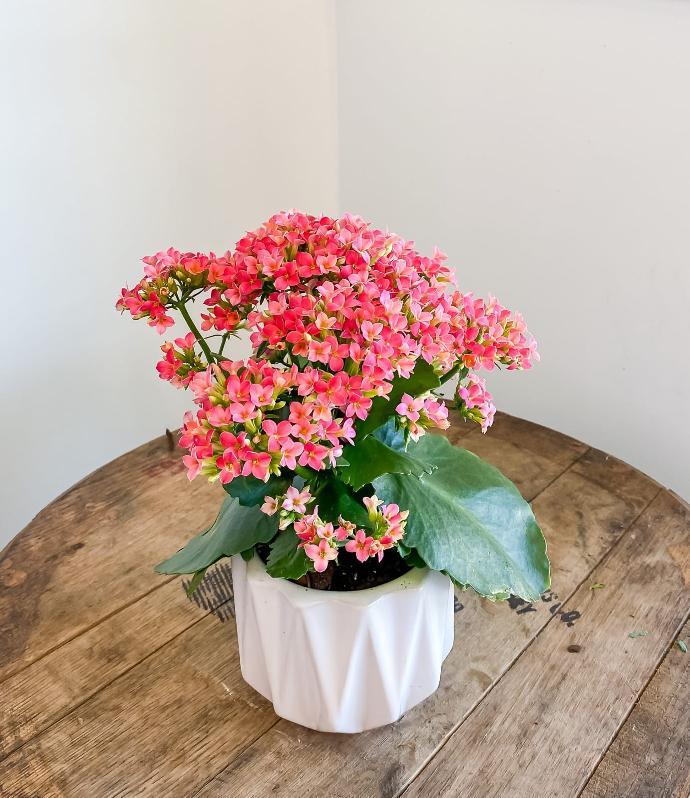
What Are The Different Types Of Kalanchoe?
1. Kalanchoe red dragon
It is a variety of Kalanchoe known for its small flowers and unique leaves. This variety is characterized by pink leaves that resemble dragon scales, hence the name "Pink Dragon".
2. Kalanchoe kiwi
It is a species of the Kalanchoe genus known for its small flowers and unique leaves. A special feature of this variety is the striking color of the leaves, which resembles the skin of a kiwi, hence the name "kiwi fruit".
3. Kalanchoe Medusa
It is a variety of Kalanchoe with small leaves and flowers. Its leaves are fleshy, light green in color, with red or red edges, giving them a special appearance. The leaves are often arranged in rosettes and have a wavy or curly texture, hence the name "Medusa", which refers to mythical creatures with snake hair. It has small orange or yellow flowers that appear in groups on long stems.
4. Kalanchoe Wendy
It is a type of Kalanchoe known for its small leaves and flowers. This variety is unique in that the leaves have a red color, making them a beautiful addition to any collection.
5. Kalanchoe Variegata
It is a perennial plant known for its small leaves and flowers. The leaves are fleshy and light green with creamy white or yellow edges, giving them a unique variegated appearance.
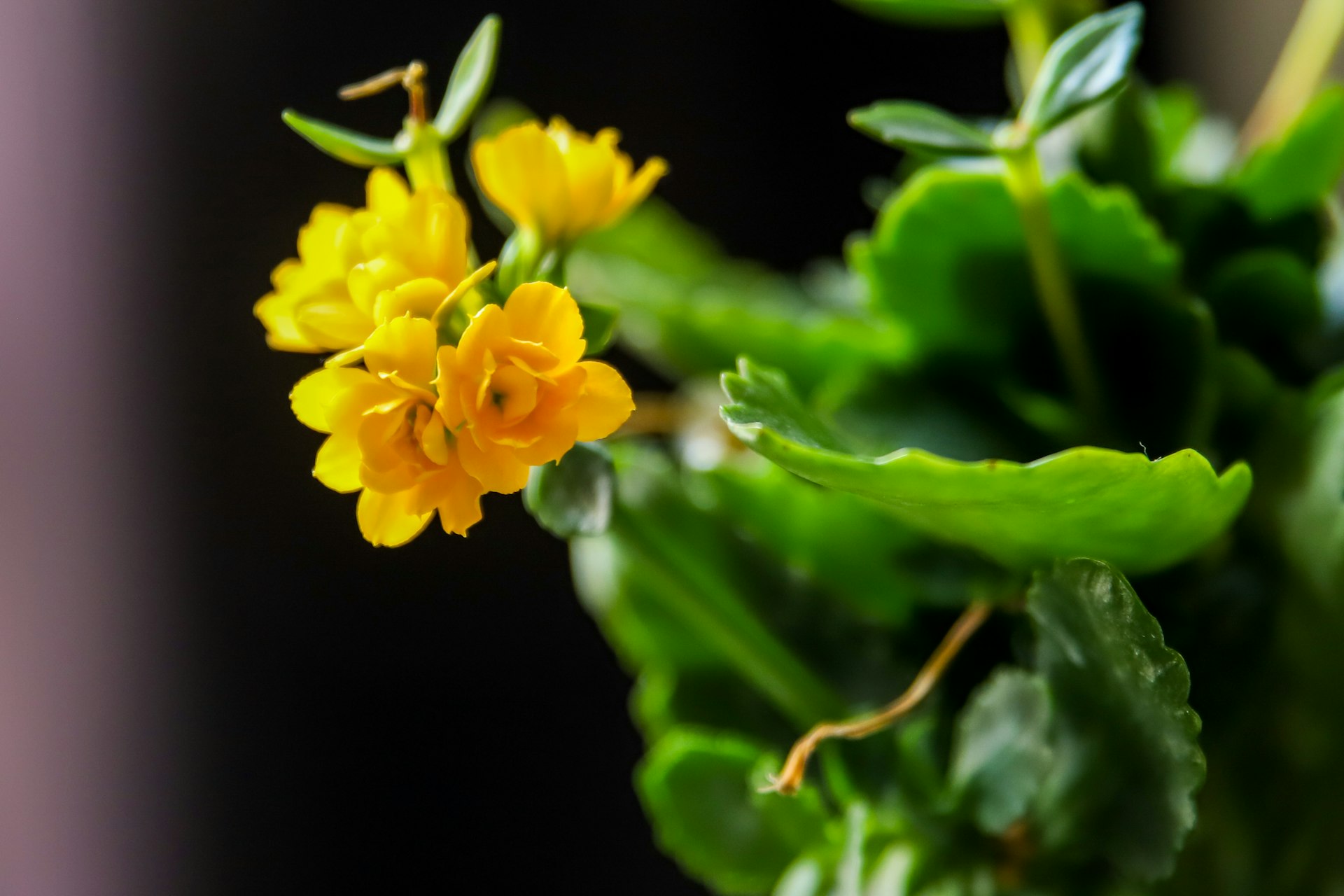
How to care for Kalanchoe?
Kalanchoe requires direct sunlight when grown indoors, and at least 8 hours of direct sunlight when grown outdoors. The break lasts six weeks and 14 hours. Approximately four months after this dark period, Kalanchoe will bloom colorful flowers.
Location
Most species are in Madagascar and Africa, and many species are popular for their ease of growing at home. As succulents, Kalanchoe are normal plants, generally needing plenty of direct sunlight - but can survive in indirect light - and watered only when completely dry.
Sunlight
To grow Kalanchoe successfully, you should know that it likes indirect light. It can withstand direct sunlight, but its leaves may burn in the sun for a long time due to high pressure. Place the plant near a south or west window to get the best light.
Soil
Whether you grow Kalanchoe indoors or outdoors, loamy soil has the right balance of sand, grit and clay for the job, says John Saltiel, curator of the United States Arboretum. Succulent or cactus mix will also work, but do not use potting soil or peat moss, which tends to stay wet.
Hydration
Water thoroughly once a week, allowing soil to dry from water. Overwatering can cause root rot, so it's important not to overwater your plants. As for light needs, Kalanchoe loves shade and direct sunlight.

Nutrition
Feed Kalanchoe with Miracle-Gro® Succulent Plant Food. Prune away dead flowers, dead leaves and dry branches. Create more Kalanchoes by breaking off pieces and sticking them into soil so they can develop roots. Leave the Kalanchoe in the dark for 14 hours a day to encourage it to bloom again.
Issues
Kalanchoe plants need full or partial sun. They need at least 4-6 hours of direct sun to grow. If Kalanchoe is planted indoors, it should have a sunny window sill. Apply liquid fertilizer NPK at a rate of (5-10-5) once a year during the growing season.
What Are The Benefits of Kalanchoe?
Kalanchoe pinnatum is a medicinal plant used to treat many ailments, including digestive problems, skin problems, and respiratory problems. It is also used to strengthen the immune system and reduce pain.

FAQs About Growing Kalanchoe
1. How long does it take for a flower to bloom?
Kalanchoe blossfeldiana is named after Robert Blossfeld, who discovered the plant in his native Madagascar. They grow in dry areas in their habitats and therefore do not need much water. They are low maintenance and have a flowering time of about eight weeks.
2. Is Kalanchoe an indoor or outdoor plant?
In a tropical environment, Kalanchoe grows well in outdoor garden beds, but gardeners in temperate regions like to call it a low-maintenance houseplant, growing 18 to 12 inches tall with leaves. Its meat is juicy. Flowers cover some things; others have feathery leaves of various shapes and sizes. Chapter
3. Can flowers grow in water?
Stick the cocoon you cut downwards into the water mixture or perlite. “Because it's a succulent, the plant doesn't want to get too wet, so you don't want to put it directly in water,” Pollack said.
4. How many times does Kalanchoe bloom per year?
In its homeland, Kalanchoe blooms almost every year, but as a potted houseplant it blooms mostly from late winter to late spring. This cycle will slow down as light exposure increases.
5. How long are the colors of the flowers?
Kalanchoes come in pink, red, yellow and orange colors. Kalanchoe Plant Care Instructions - Kalanchoe plants like full sun but can survive in medium light. Water thoroughly only when the soil is dry, allowing the soil to dry between waterings every 1-2 weeks.
